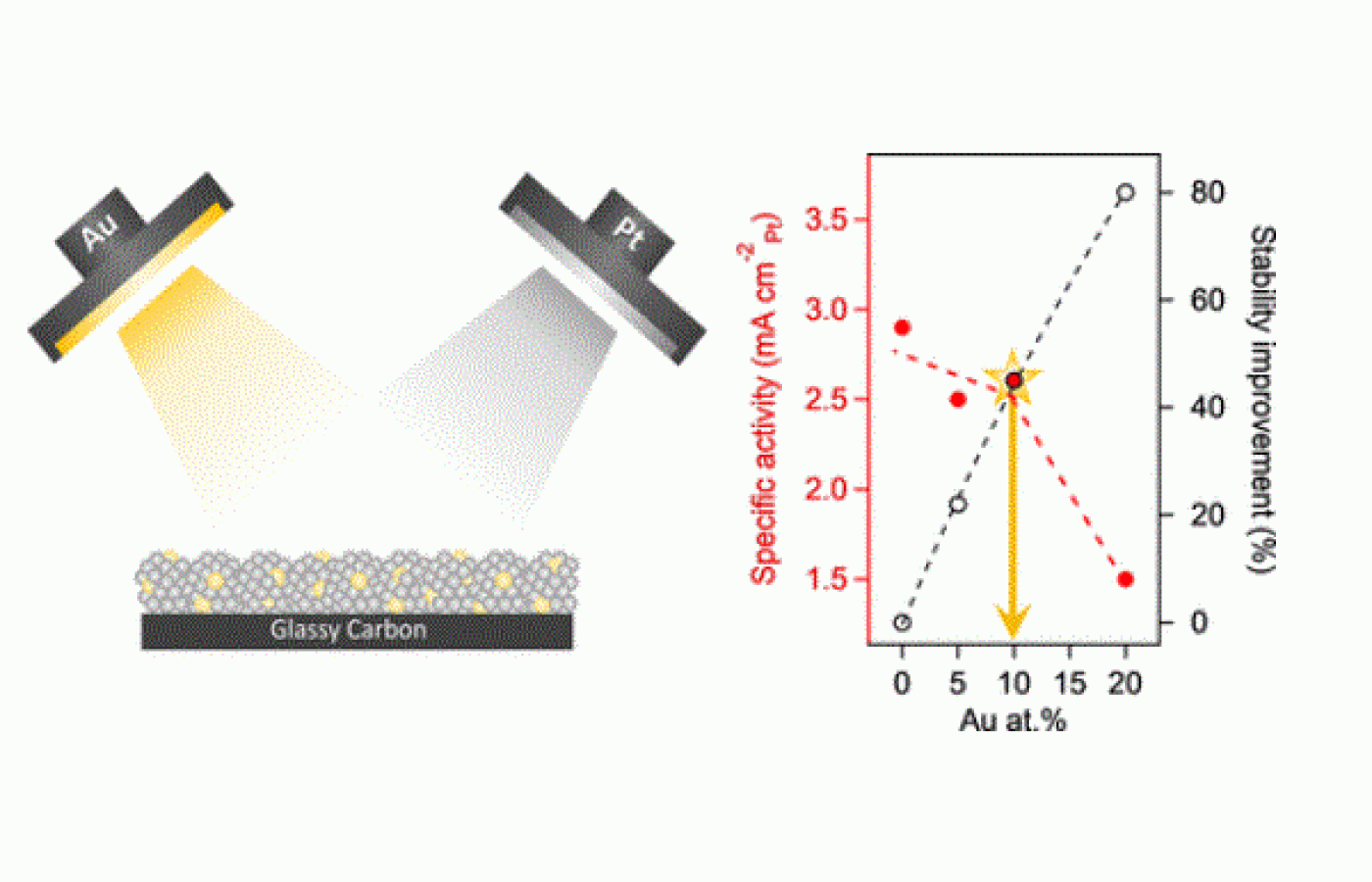
Stabilization of cathode catalysts in hydrogen-fueled proton-exchange membrane fuel cells (PEMFCs) is paramount to their widespread commercialization. Targeting that aim, Pt–Au alloy catalysts with various compositions (Pt95Au5, Pt90Au10, and Pt80Au20) prepared by magnetron sputtering were investigated. The promising stability improvement of the Pt–Au catalyst, manifested in suppressed platinum dissolution with increasing Au content, was documented over an extended potential range up to 1.5 VRHE. On the other hand, at elevated concentrations, Au showed a detrimental effect on oxygen reduction reaction activity. A systematic study involving complementary characterization techniques, electrochemistry, and Monte Carlo simulations based on density functional theory data enabled us to gain a comprehensive understanding of the composition–activity–stability relationship to find optimal Pt–Au alloying for maintaining the activity of platinum and improving its resistance to dissolution. According to the results, Pt–Au alloy with 10% gold represent the most promising composition retaining the activity of monometallic Pt while suppressing Pt dissolution by 50% at the upper potential limit of 1.2 VRHE and by 20% at devastating 1.5 VRHE.
More details can be ound here: https://pubs.acs.org/doi/10.1021/acsami.2c18655.
© 2021 Matematicko-fyzikální fakulta Univerzity Karlovy.
Všechna práva vyhrazena. | Cookies